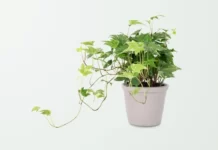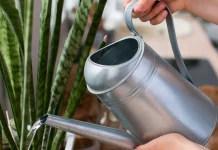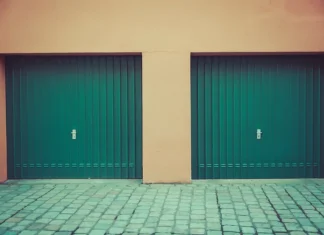Nothing is more satisfying to a homeowner or gardener than showing off their hard work by creating a lovely garden. However, a beautiful garden doesn’t just happen; it takes time, effort, and proper tools.
Whether you’re an experienced gardener or just getting started, the appropriate gardening tools can make all the difference in creating the garden of your dreams.
With these tools, you can save time, energy, and muscle strain while growing a garden. We have listed the best gardening tools every gardener needs and will enhance your gardening efforts in every way possible.
Tools to Make Your Gardening Job Easier
Here, we have given essential gardening tools to help you with gardening tasks and make gardening easier and more enjoyable.
1. Pruning Shears
It’s important to have a good pair of them because trimming is necessary for gardening. Pruning shears are made to easily and precisely cut through stems, branches, and twigs.
This lets you shape plants, eliminate dead or damaged parts, and encourage healthy growth. When shopping for pruning shears, find a pair with sturdy blades, a comfortable grip, and a locking mechanism.
2. Garden Scissors
Garden scissors are another tool you can use to cut things and be useful for many gardening tasks. They are smaller and lighter than pruning shears, which makes them perfect for cutting flowers, herbs, and vegetables that aren’t very strong. You can also use garden scissors to cut off dead blooms, trim leaves, and pick fruits and vegetables. Look for garden scissors with sharp blades and handles that fit the size of your hand.
3. Gardening Fork
A garden fork is a multipurpose digging tool that can be used for a variety of purposes in the garden, including but not limited to turning soil, aerating compost, and lifting bulbs and roots. Various digging forks and border forks are available for use in the garden.
A digging fork has four or more thick tines that are widely separated, while the tines on a border fork are shorter, thinner, and closer together. You’ll need a garden fork with a thick, long handle and thick, sharp tines to dig deeply into tough soil.
4. Gardening Trowels
Trowels are small, handheld digging tools for planting, transplanting, and garden wedding. Its pointed blade is intended to cut through the ground, and its curved handle makes it easy to hold.
If you’re a gardener and ever need to plant anything small, like seeds or bulbs, you need a garden trowel. They can be found in various materials, including plastic, aluminum, and stainless steel. Choose a garden trowel that fits comfortably in your hand.
5. Garden Rake
A garden shouldn’t have at least one small rake. It cleans the surface of leaves and other things. You can use a plastic rake or a metal rake with fork-shaped nails.
It is made to pick up leaves and other garden waste without hurting the grass or soil below. Rakes can be used for various tasks around the garden, including scraping, collecting, and leveling soil and leaves. Depending on the type of rake, it can have a flat head for smoothing the soil or sharp metal tines that can break up hard soil and rocks.
6. Garden Hoe
You need a garden hoe to prepare your soil, edge your grass, and perform countless other gardening jobs. There are many versions of this handy gardening tool, but the standard Dutch or Draw hoe will serve the needs of most gardeners. When you’re getting your beds ready for planting or weeding, you’ll find that this tool is essential.
7. Watering Can
Every gardener has to have access to water, which makes a watering can an essential tool. It comes in many sizes and shapes, from compact, portable cans to enormous, wheeled units, and you can use it to water plants, flowers, and vegetables.
Depending on what is at hand, a watering can’s spout or nozzle could be metal, plastic, or ceramic. Choose a watering can that fits your hand well and has a nozzle that gives you control over the amount of water you pour.
8. Gloves
Using gloves while gardening can protect your hands from getting scratched or causing allergies. If you use gloves, you can avoid skin injuries and chemical burns to your hands. Having well-fitting gloves will simplify tasks like digging, weeding, and planting. Always choose gloves made of a material that can let air through.
9. Loppers
Loppers are a useful tool to have on hand for more intensive cutting tasks. Loppers are similar to pruning shears in terms of the design of the blades, but their longer handles allow for greater leverage. With the longer handles, you can reach further without turning to a ladder or step stool and even chop thicker branches.
10. Shovel
Shovels can dig holes and move loosened dirt and rocks. A standard garden shovel with a rounded point is handy for digging in the garden. A shovel is like a spade, but its blade is wider, and the sides that stick up are used to fill, loosen, and move things like dirt and fertilizer.
11. Weed Puller
When you need to get rid of weeds or other unwanted plants in your garden, a weeder or weed puller is the equipment for the job. Any undesired plant, especially one with taproot or fibrous roots, can be removed from beds, pots, and cracks with the help of a weeder. Weed pullers come in a wide range of styles and prices. Certain weed pullers feature a leverage bar to help extract the weeds at an angle.
12. Dibber
For planting seeds, seedlings, or small bulbs, you’ll need a dibber and a pointed wooden stick. They are available in many shapes, including straight and T-shaped dibbers. Dibbers have many uses, including digging trenches, planting holes, removing weeds, and digging roots.
13. Garden Hose
A hose is one of the most crucial gardening tools. A garden hose is a pipe typically used to water plants. Dressing a short hose around constantly can be frustrating, but a lengthy hose is a solution. Rubber hoses are more durable than their plastic counterparts.
Choose a water hose that lets you direct the spray in different ways.
Water can be sprayed in any direction with the help of a hose and a nozzle that regulates the flow. A hose purchase should be made based on the dimensions of your garden.
14. Wheelbarrows
Wheelbarrows are useful for moving bulky items such as compost, dirt, and other components. Because of the weight of potted plants, sand, and compost, this device is necessary for transporting these materials. It’s easier on your back if you use a wheelbarrow to move big bags of fertilizer.
15. Spade
A spade’s primary function is to dig, making it an ideal tool for planting shrubs and trees. The combination of its sharp point and flat edge makes it perfect for defining beds and slicing through roots.
It is ideal for minimal digging. The shape of the blade makes it easier to cut sod, reshape beds, and dig deeper holes for plants. The handles of spades can either be curved or straight. Look for a tool with a U-shaped handle for superior grip and ergonomics; even if they’re gentler on the back, curved handles make digging more difficult.
Tips For Taking Care Of Garden Tools
When properly cared for, gardening tools can last years. So here are some tips for taking care of your garden tools:
- Each time you use a tool, give it a quick cleaning. Make sure to clean the handles and blades well to eliminate any grit or dirt.
- Always be sure that all the screws on your tools are tight. Smooth any rough handles and fix any cracks as soon as possible to reduce the risk of damage.
- Remove the risk of rust and dry, cracked wood by oiling your tools regularly.
- Keep lawn and garden equipment out of the reach of kids.
Tips for buying gardening tools
Below are some of the things you need to consider before investing in gardening tools.
- Quality Materials
Gardening tools are an investment, so choosing tools made of strong, long-lasting materials is important. Look for tools made of strong materials like stainless steel or carbon steel that won’t rust. Handles made of wood are also a good choice because they are easy to hold and can last long.
- Gardening Needs
Consider your own gardening needs before buying any gardening equipment. Consider the work you must do in your garden, such as planting, digging, weeding, and pruning. Selecting the right garden tools is essential, as various jobs call for various tools.
- Handle size
Make sure the handles of the tools you choose fit your hand well. Too small or too big of a handle can be uncomfortable and make it hard to use the tool correctly.
- Weight
Using heavy tools for a long time can be tiring, so choose light but still strong tools.
Bottom Line
The quality of your gardening work will dramatically improve with the right gardening tools. Now that you know what each of the 15 most vital tools is for, you can save up for some high-quality gear that will make your job easier, faster, and safer. As a result, your time spent gardening will be more productive and satisfying.












